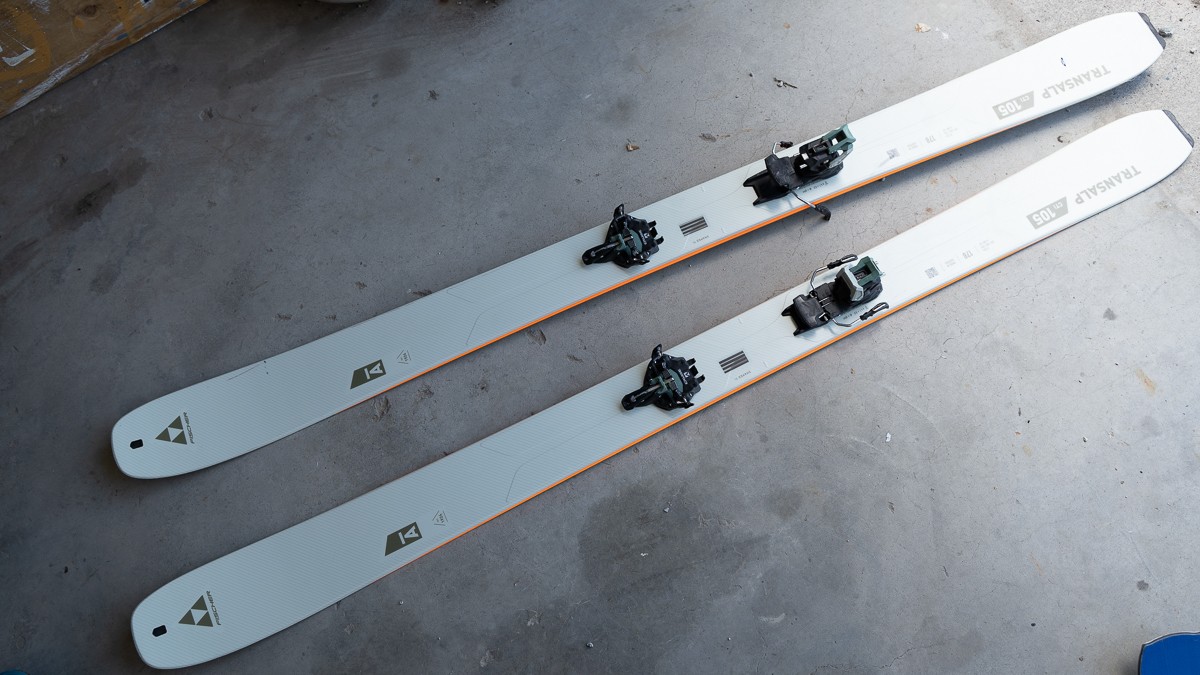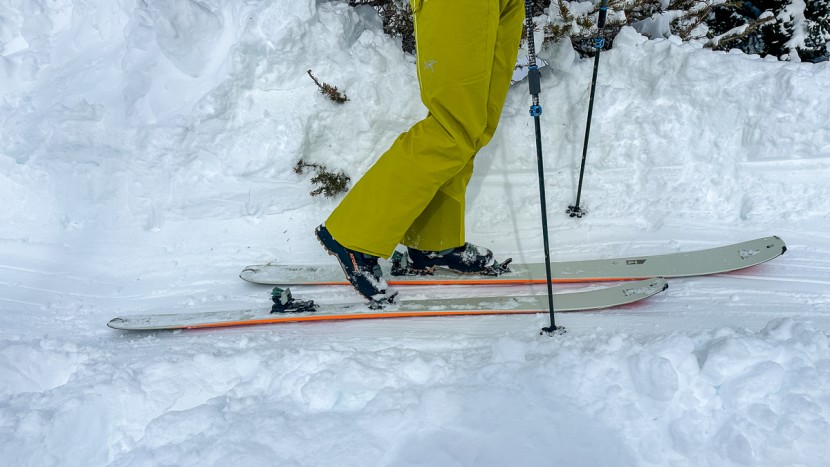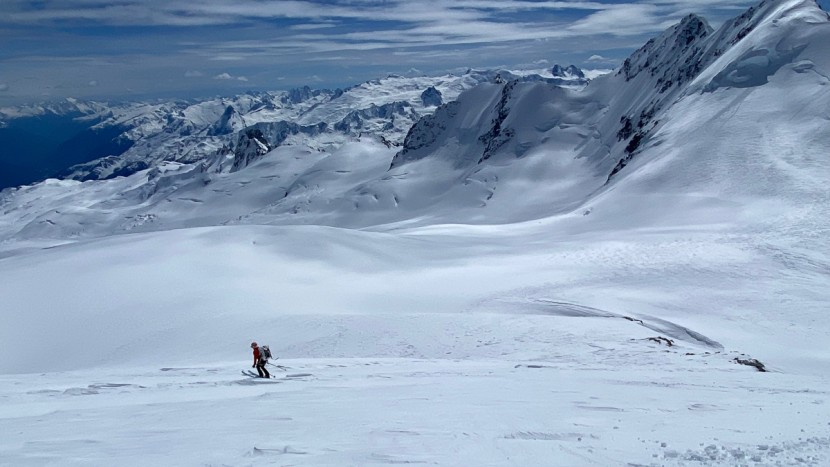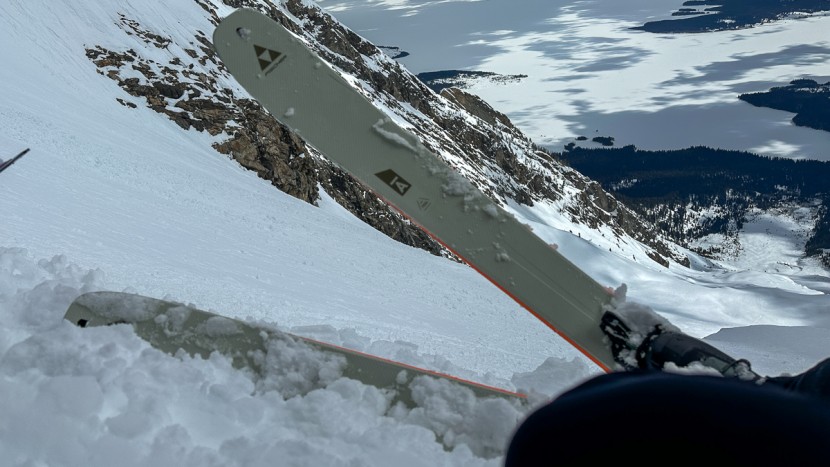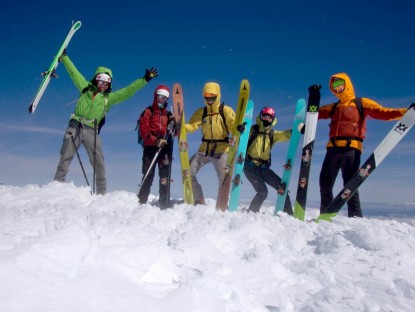Our Verdict
Compare to Similar Products
 This Product
Fischer Transalp 105 CTI | |||||
|---|---|---|---|---|---|
| Awards | Best Overall Backcountry Skis | Optimized for Downhill Performance | Best Bang for the Buck | A Realistic Backcountry Ski | |
| Price | $950 List $899.99 at Amazon | $719.96 at Backcountry Compare at 2 sellers | $639.96 at Evo Compare at 3 sellers | $800 List | $900 List $599.97 at Amazon |
Overall Score  |
|||||
| Star Rating | |||||
| Bottom Line | These should be on your short list of excellent downhill-focused touring skis | This relatively wide all-season ski is one of our favorites and great for all-around human-powered use | Heavier skis that offer meaningful performance on the downhill, ideal for newer backcountry skiers or for experts who don't mind trading a bit of efficiency for a bit more fun | Reasonably affordable and great for a wide range of human-powered skiing, these are your backcountry "quiver-of-one" | If you have a truly wide-ranging ski habit and have realistic expectations of what you will find out in the mountains, consider these skis very closely |
| Rating Categories | Fischer Transalp 10... | Blizzard Zero G 105 | Salomon QST Echo 106 | K2 Wayback 106 | Atomic Backland 95 |
| Weight (25%) | |||||
| Firm Snow (20%) | |||||
| Powder (20%) | |||||
| Crud and Poor Snow (20%) | |||||
| Stability at Speed (15%) | |||||
| Specifications | Fischer Transalp 10... | Blizzard Zero G 105 | Salomon QST Echo 106 | K2 Wayback 106 | Atomic Backland 95 |
| Measured Weight Per Ski (g) | 1573 | 1513 | 1779 | 1436 | 1422.5 |
| Measured Length Tested (cm) | 178 | 178 | 180 | 179 | 175 |
| Measured Waist Width (mm) | 105 | 105 | 105 | 105 | 94 |
| Weight Per Surface Area Ratio (g/cm²) | 0.72 | 0.72 | 0.8 | 0.68 | 0.73 |
| Measured Weight Per Pair (g) | 3146 | 3025 | 3557 | 2872 | 2845 |
| Measured Weight Per Pair (lbs) | 6.9 | 6.7 | 7.8 | 6.3 | 6.3 |
| Manufacturer Claimed Length (cm) | 178 | 180 | 181 | 179 | 177 |
| Available Lengths (cm) | 164, 171, 178, 185 | 164, 172, 180, 188 | 157, 165, 173, 181, 189 | 165, 172, 179, 186 | 161 ,169, 177, 185 |
| Measured Dimensions, Tip/Center/Tail (mm) | 139/105/123 | 133/104/118 | 140/105/125 | 131/105/120 | 126/94/114 |
| Manufacturer Claimed Dimensions (mm) | 139/105/124 | 133/105/119 | 136/106/126 | 132/106/121 | 128/95/116 |
| Turn Radius (m) | 22 | 23 | 19 | 22.3 | 18 |
| Construction Type | Semi-Cap | Sandwich | Sandwich | Semi-Cap | Semi-Cap |
| Core Material | Air Tec Wood Core | Paulownia | Poplar, Caruba | Paulownia | Poplar |
| Rocker/Camber Profile | Tip and tail rocker, flat underfoot | Tip and tail rocker | Tip and tail rocker, camber underfoot | Tip and tail rocker, flat underfoot | Tip and tail rocker, camber underfoot |
Our Analysis and Test Results
In our review there are almost a half dozen close competitors to the Transalp 105 CTI. The sexy subcategory of soft-snow-focused touring skis receives a lot of attention from manufacturers, consumers, and our test team. In this realm, this Transalp is excellent. However, when the snow stops flying, it doesn't perform particularly well in firm snow. Whether the firm conditions are due to wind, spring melt-freeze, or even traffic-packed snow on hand-cut or gladed trails below treeline, you would do better with a different ski.
Performance Comparison
Weight
We look for all-around human-powered skis that weigh roughly 1600 grams or less. Many skiers will look for even lighter products, chopping up to 300 grams per ski in the interest of uphill efficiency while not fully sacrificing downhill enjoyment. On a calibrated scale, one of our test skis weighed 1581 grams and the other 1565 grams, for an average weight of 1573 grams. This puts the Transalp 105 CTI right in the mix with the best “downhill-focused” backcountry skis. It certainly skis well, but so do other options we tested that weigh up to 100 g less per ski. That level of weight savings pays dividends on the uphill, without any significant penalty in ski performance.
Firm Snow
You'll see excellent athletes and other reviewers using the Transalp 105 CTI for steep, firm, serious skiing. Although these skis will survive on firm snow, we argue that what is “doable” is different from what is ideal. Specifically, the edge hold is a bit unbalanced – no matter how much energy you put into the turns, the squared-off tails of this ski grip better than the early-rise tips. As a result, you need to exercise balance and attention to even out fore and aft edge pressure. At reasonable speed, the edges hold just fine, but many other skis we tested are better balanced. If you want a single backcountry ski for all conditions, this Transalp is a reasonable choice. If you aim to primarily ski firm, steep slopes, then there are much better options.
Powder
For the vast majority of powder snow conditions, the Transalp 105 CTI is exactly what you want and need. In the deepest, softest snow – up to the point that it is “actually too deep to ski” – there are bigger skis that will float better and ski faster. On those days, these skis simply aren't fat enough. Despite this limiting factor, we loved the sensation of skiing powder on this Transalp. When the going gets a bit funky, you'll appreciate the sweet spot that these 105-millimeter-waisted skis offer compared to fatter or skinnier skis.
Crud and Poor Snow
This ski really excels in difficult snow conditions. As we noted above, you can opt for wider or narrower skis that excel in powder or firm snow, respectively. Of course, other, heavier skis will blast through crud better, too. However, none of these archetypal designs will handle tough snow the way this versatile Fischer ski does. Of course, our assessment of performance in poor snow is decidedly subjective – our test team is loaded with ski guides who are confident skiing in any conditions. Nonetheless, we are confident that the Transalp 105 CTI is among a select few skis that truly excel in this metric.
Stability at Speed
Considering the caveats of balance and edge hold on firm snow, we say let 'em run on the Transalp 105 CTI. This hefty, relatively stiff ski does fine at higher speeds, especially in soft snow. At more reasonable backcountry-skiing speeds, you'll enjoy unhindered performance through a variety of turn radii and shapes.
Should You Buy the Fischer Transalp 105 CTI?
Yes, but first, we suggest carefully considering when and where you'll ski them. If you can honestly say that you will spend much of your time skiing soft snow, then proceed with confidence. If you appreciate a ski that can bust through chop and difficult snow conditions, then the Transalp 105 CTI offers that power. However, there are a handful of skis in our lineup that are closely comparable, and it's worth looking at some alternatives below.
What Other Backcountry Skis Should You Consider?
In our review, you have lots of options in the general sub-category of soft-snow touring skis. The award-winning Blizzard Zero G 105 is very similar to the Transalp 105 CTI, just slightly lighter weight and a touch better in firm snow. The reasonably affordable K2 Wayback 106 is even lighter weight, though you will sacrifice a bit of performance in crud or poor snow compared to the Fischer or Blizzard skis. The lively DPS Pagoda Tour CFL 105 should certainly be on your shortlist, though this ski is much more expensive than the others.


